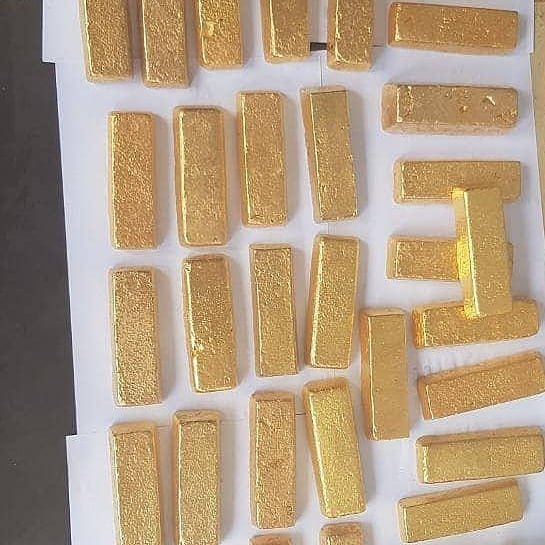Gold bars have long been a cornerstone of wealth preservation, offering stability in turbulent economic times. As global markets face uncertainty—geopolitical tensions, inflation concerns, and currency fluctuations—gold bars remain a trusted safe-haven asset. This blog explores why investing in gold bars is a smart move, their benefits, how to buy them, and key considerations for building a secure portfolio.
Why Invest in Gold Bars?
Gold bars, also known as bullion bars, are physical gold cast or minted into standardized sizes, typically ranging from 1 gram to 1 kilogram. Their appeal lies in their tangible value, universal recognition, and ability to hedge against economic volatility. In 2025, gold prices have soared 40% year-to-date, driven by a weaker US dollar, low interest rates, and robust demand for safe-haven assets. Investing in gold bars offers a direct way to capitalize on this momentum while securing wealth for the long term.
Key Benefits of Gold Bars
- Wealth Preservation: Gold retains value over centuries, unlike paper currencies prone to inflation.
- Liquidity: Gold bars are globally recognized and easily traded, ensuring quick access to cash.
- Portfolio Diversification: Gold’s low correlation with stocks and bonds reduces overall portfolio risk.
- Tangible Asset: Physical bars provide a sense of security, free from counterparty risk.
- Inflation Hedge: Gold historically outpaces inflation, protecting purchasing power.
Types of Gold Bars for Investment
Gold bars come in various forms, each suited to different investor needs:
| Type | Description | Best For |
|---|---|---|
| Minted Bars | Precision-crafted with polished finishes, often in smaller sizes (1g–100g). | Collectors, small-scale investors. |
| Cast Bars | Poured into molds, typically larger (250g–1kg), with a rustic look. | High-net-worth investors, bulk purchases. |
| CombiBars | Pre-scored bars divisible into smaller units (e.g., 1g pieces). | Emergency currency, gifting. |
| Branded Bars | Produced by reputable refiners (e.g., PAMP Suisse, Perth Mint) with certified purity. | All investors seeking trust and resale value. |
Most investment-grade bars are 99.99% pure (24-karat), stamped with weight, purity, and refiner details for authenticity.
How to Buy Gold Bars: A Step-by-Step Guide
- Choose a Reputable Dealer: Opt for established dealers like JM Bullion, APMEX, or local mints with transparent pricing and authenticity guarantees.
- Verify Purity and Certification: Ensure bars are LBMA-accredited (e.g., from refiners like Valcambi or Argor-Heraeus) with 99.99% purity.
- Compare Premiums: Premiums over spot price vary by size and brand; smaller bars (1g–10g) often carry higher premiums (5–10%) than larger ones (1–2%).
- Consider Storage: Decide between home storage (safes) or secure vaults offered by dealers or banks for larger holdings.
- Check Market Trends: Monitor gold prices via platforms like Kitco or Bloomberg to time purchases, though long-term investors need not obsess over short-term dips.
- Understand Taxes: In many regions, gold bars are exempt from sales tax for investment purposes, but confirm local regulations.
Why Gold Bars Are Thriving in 2025
The gold market is red-hot, with prices hitting record highs in September 2025, fueled by global ETF inflows and central bank buying. India alone saw gold imports climb to a nine-month high of 60–65 tonnes in August, reflecting strong physical demand. Gold bars, particularly 1-ounce and 100-gram sizes, are popular among retail investors for their affordability and liquidity. Unlike gold ETFs or stocks, physical bars offer direct ownership, free from market counterparty risks.
Risks and Considerations
While gold bars are a solid investment, they’re not without challenges:
- Storage Costs: Secure vaults or safes add ongoing expenses.
- Premiums: Smaller bars have higher per-ounce costs, eating into returns.
- Market Volatility: Short-term price swings can occur, though gold’s long-term stability endures.
- Counterfeit Risks: Stick to LBMA-accredited bars and trusted dealers to avoid fakes.
Gold Bars vs. Other Gold Investments
| Investment Type | Pros | Cons |
|---|---|---|
| Gold Bars | Tangible, liquid, low counterparty risk | Storage costs, premiums on small bars |
| Gold ETFs | Low cost, easy to trade | No physical ownership, management fees |
| Gold Coins | Collectible, divisible | Higher premiums than bars |
| Gold Stocks | Potential for high returns | Company-specific risks, market volatility |
For investors prioritizing security and direct ownership, gold bars outshine alternatives.
Future Outlook for Gold Bar Investments
Looking ahead, gold’s trajectory remains bullish. Central banks, including India’s RBI with 880 tonnes in reserves, continue to bolster gold holdings, signaling confidence in its value. Festive season demand in markets like India and China is expected to drive physical buying through Q4 2025, potentially pushing prices higher. Meanwhile, innovations like blockchain-tracked gold bars are enhancing transparency, making bullion even more appealing.
Conclusion: Building Wealth with Gold Bars
Gold bars offer a timeless, tangible way to safeguard wealth against economic uncertainty. Whether you’re a seasoned investor or a beginner, their simplicity, liquidity, and enduring value make them a cornerstone of any diversified portfolio. Start small with a 1-ounce bar or go big with a 1-kilogram cast—either way, gold bars are a golden ticket to financial security.
Ready to invest? Explore trusted dealers like JM Bullion or contact local mints for LBMA-accredited bars tailored to your goals.
Gold bar investment,
Buy gold bars online,
Gold bullion prices 2025,
Physical gold investment,
Gold bars for wealth preservation,
LBMA-accredited gold bars,
Gold market trends 2025,
Safe-haven gold investment,
Gold bar storage solutions,
24-karat gold bars,
Gold investment for beginners,
Gold bar premiums explained,
Best gold bars to buy,
Gold vs ETFs comparison,
Festive season gold demand,












Leave a comment